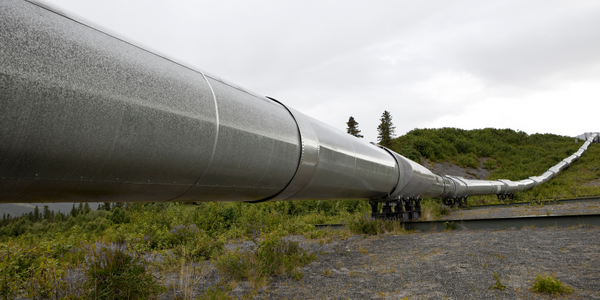Customer Company Size
SME
Region
- Europe
Country
- Russia
Product
- ICONICS GENESIS32™
- TrendWorX™32
- DataWorX™32
Tech Stack
- OPC servers
- SQL servers
- Microsoft Office
Implementation Scale
- Enterprise-wide Deployment
Impact Metrics
- Productivity Improvements
- Cost Savings
Technology Category
- Application Infrastructure & Middleware - Data Exchange & Integration
Applicable Industries
- Oil & Gas
Applicable Functions
- Process Manufacturing
Use Cases
- Process Control & Optimization
- Predictive Maintenance
Services
- System Integration
About The Customer
SC «ATS» specializes in the design, creation, introduction and tracking of automation systems in the Russian petroleum and natural gas industries. SC «ATS» acts specifically as a system integrator, providing design for, delivery of, and service to gas and oil-producing industry control systems. The company works with multiple plants in the Russian oil and gas industry and has been involved in providing control systems in three locations: OAO Surgutneftegaz, NK Rosneft, and TNK BP (Tumenneftegaz).
The Challenge
SC «ATS» works with multiple plants in the Russian oil and gas industry. The company was involved in providing control systems in three locations: OAO Surgutneftegaz, with more than 40 objects; NK Rosneft, with more than 20 objects; and TNK BP (Tumenneftegaz), with more than 10 objects. The multiple objects to control at each plant make use of a wide variety of technologies, including radio, GSM/GPRS, Wi-Fi and Ethernet connectivity. In total, there are approximately 16 distributed control stations on area objects and about 118 on telemechanical systems. The types of connected devices include multiple controllers, flowmeters and heater controllers from B&R and Siemens, which are connected to ICONICS HMI/ SCADA interface via OPC servers.
The Solution
SC «ATS» has selected ICONICS GENESIS32™ OPC Web-enabled HMI/SCADA suite; including the TrendWorX™32 enterprise-wide data collection, logging, charting, reporting and analysis component and the DataWorX™32 OPC data aggregation, bridging, redundancy and tunneling add-on; for its suggested industrial automation software solution. The OPC servers themselves are used primarily for data collection, while OPC loggers are for reporting/logging and SQL servers are used for data storage. The total number of I/O points ranges from four on the telemechanical control systems to up to 14,000 on area object points. SC «ATS» uses Microsoft software in its control system solutions, including SQL Server and Microsoft Office (Excel, Access, etc.).
Operational Impact
Quantitative Benefit

Case Study missing?
Start adding your own!
Register with your work email and create a new case study profile for your business.
Related Case Studies.

Case Study
Taking Oil and Gas Exploration to the Next Level
DownUnder GeoSolutions (DUG) wanted to increase computing performance by 5 to 10 times to improve seismic processing. The solution must build on current architecture software investments without sacrificing existing software and scale computing without scaling IT infrastructure costs.

Case Study
Remote Wellhead Monitoring
Each wellhead was equipped with various sensors and meters that needed to be monitored and controlled from a central HMI, often miles away from the assets in the field. Redundant solar and wind generators were installed at each wellhead to support the electrical needs of the pumpstations, temperature meters, cameras, and cellular modules. In addition to asset management and remote control capabilities, data logging for remote surveillance and alarm notifications was a key demand from the customer. Terra Ferma’s solution needed to be power efficient, reliable, and capable of supporting high-bandwidth data-feeds. They needed a multi-link cellular connection to a central server that sustained reliable and redundant monitoring and control of flow meters, temperature sensors, power supply, and event-logging; including video and image files. This open-standard network needed to interface with the existing SCADA and proprietary network management software.

Case Study
Refinery Saves Over $700,000 with Smart Wireless
One of the largest petroleum refineries in the world is equipped to refine various types of crude oil and manufacture various grades of fuel from motor gasoline to Aviation Turbine Fuel. Due to wear and tear, eight hydrogen valves in each refinery were leaking, and each cost $1800 per ton of hydrogen vented. The plant also had leakage on nearly 30 flare control hydrocarbon valves. The refinery wanted a continuous, online monitoring system that could catch leaks early, minimize hydrogen and hydrocarbon production losses, and improve safety for maintenance.









